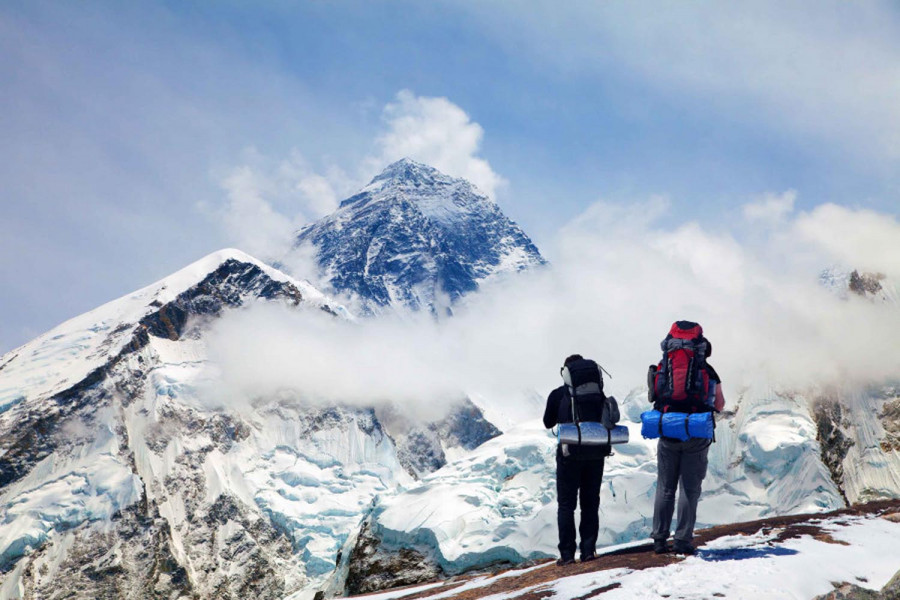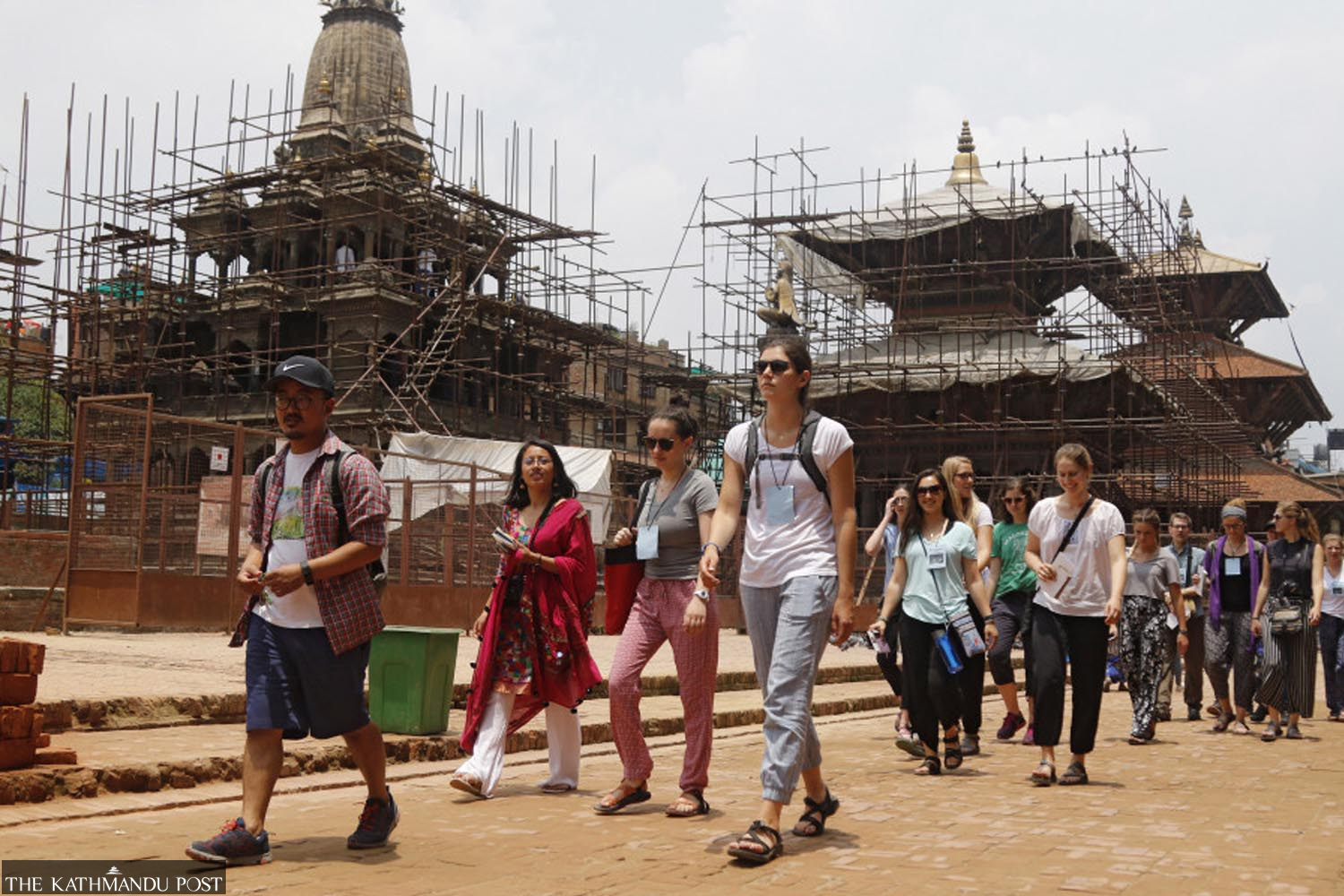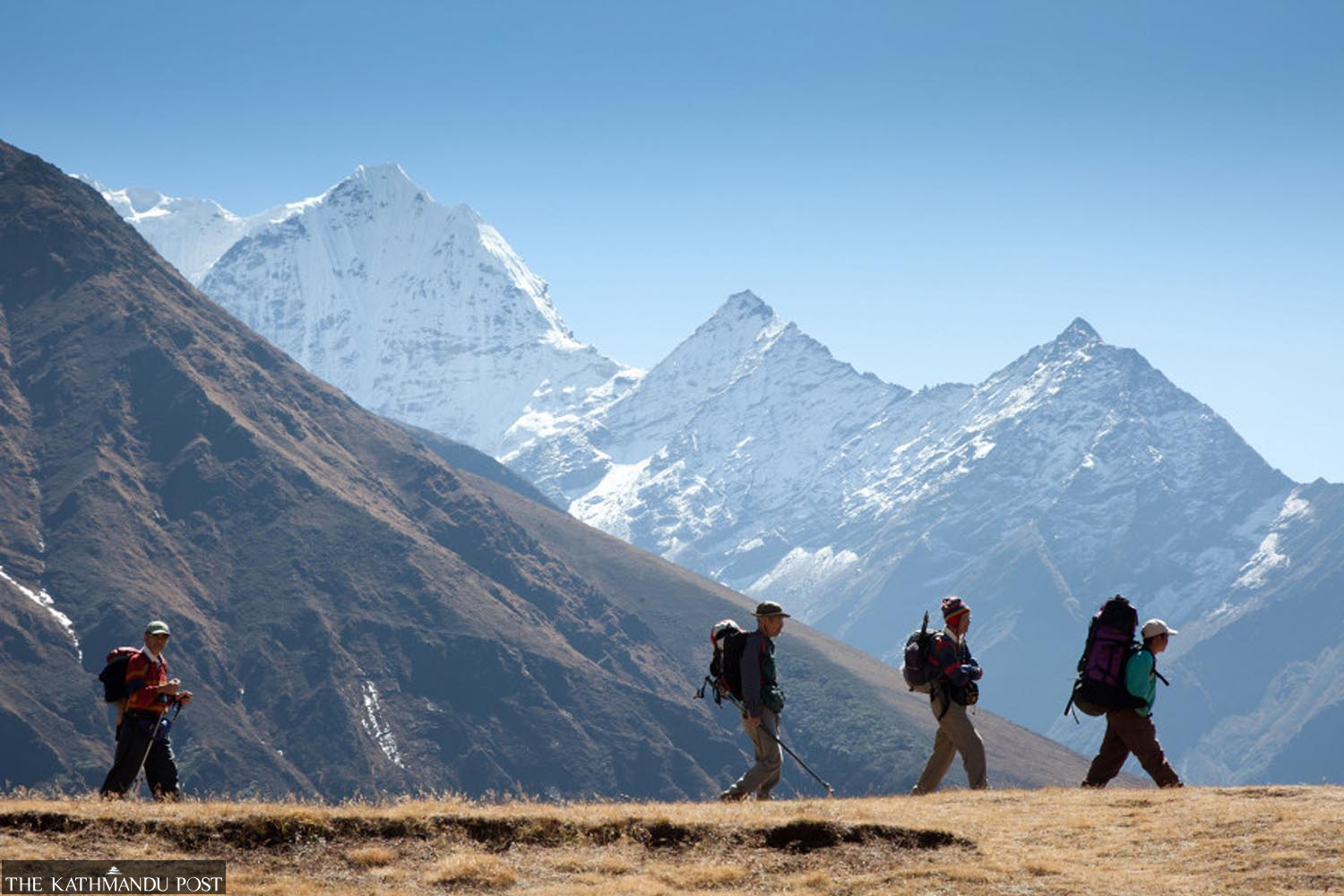
The tourism industry is the fourth largest employer in the country, according to the Central Bureau of Statistics. Shutterstock
With two new international airports in the making in key tourist destinations, a buoyed private sector poured billions into tourism infrastructure in the last few years but it appears the hoped-for boom may be some time in coming, insiders say.
Tourist arrivals in the second quarter continue to be disappointing. The outlook for the third quarter isn't much better, and unemployment remains a risk. Experts have attributed the poor show to global inflation, which has made travel packages pricier than ever.
Nepali travel traders are struggling to stay in business as arrivals have yet to fully rebound. The Nepal government, however, has made no moves to launch a recovery plan, travel trade entrepreneurs complain.
The Tourism Ministry had formed a committee to revive the ailing industry, but not much has come of it. The chief of the Nepal Tourism Board, the country’s main tourism promotional body, rues lack of action as the industry continues to stumble aimlessly.
“There are problems in our tourism industry. Everybody points at them, but nobody tries to find a solution,” said Dhananjay Regmi, chief executive officer of the Nepal Tourism Board, speaking at the Symposium on Partnership for Resilient Tourism jointly organised by the Federation of Nepalese Chambers of Commerce and Industry and the Nepal Tourism Board.
“From small data to long-term policies, Nepal’s tourism has been a synonym of inconsistency,” said Regmi. “There are no promotional activities at all.”
Travel trade entrepreneurs say that the government has failed utterly to promote the country after it reopened fully to foreign tourists in September 2021 following the virus closures.
The perfect example of unhurriedness in officialdom, according to industry insiders, is the sleepy way the newly inaugurated Gautam Buddha International Airport in Bhairahawa has been functioning.
Since opening to huge fanfare in May, the large airport has been handling three international flights a week by a lone airline from Kuwait.
“This is how the government and its bodies function. No one is bothered,” Yogendra Sakya, a senior travel trader entrepreneur, told the Post.
“In Nepal, most government agencies enforce stringent rules instead of facilitating the industry with proper and attractive policies, which ultimately becomes counter-productive.”
Sources at the Civil Aviation Authority of Nepal say it is bringing out a new rule requiring all airlines operating out of Kathmandu’s Tribhuvan International Airport to conduct at least one service from the new airport in Bhairahawa.
"There are many problems in the civil aviation system which has been hurting the tourism industry," said Sakya.

Nepal received 1.19 million tourists in 2019. Post File PhotoThe Tourism Ministry has been wilfully delaying crucial civil aviation bills.
Two long-pending aviation bills, whose passage would have hastened the removal of Nepal from the European Commission's air safety list, encountered another setback after the then tourism minister Prem Ale in March stopped them from being tabled in the House for discussion.
Parliament was subsequently prorogued, and the proposed pieces of legislation were once again put in deep storage. The House of Representatives is back and is holding its last session before the election slated for later this year, but there is no indication of the bills being tabled.
“We have to get out of the safety list if we want to attract tourists,” said Sakya.
The tourism industry is the fourth largest employer in the country, according to the Central Bureau of Statistics.
Nepal’s tourism sector generated Rs240.7 billion in revenue and supported more than 1.05 million jobs directly and indirectly in 2018, according to the annual World Travel and Tourism Council research report.
The London-based organisation said that travel and tourism's total contribution to the country’s gross domestic product stood at 7.9 percent.
Shekhar Golchha, president of the Federation of Nepalese Chambers of Commerce and Industry, the apex body of the country's private sector, says the country lacks tourist-friendly services.
“The government needs to improve the condition of the airports and roads in order to give tourists a pleasing travel experience,” Golchha added. “Tourist experiences at the Tribhuvan International Airport are not welcoming.”
Nepal received 1.19 million tourists in 2019.
In 2020, Nepal had just launched an ambitious Visit Nepal Year campaign with much fanfare, aiming to attract at least 2 million tourists, only to have to abandon the programme after the incipient pandemic exploded into worldwide proportions.
The disastrous year ended with 230,085 arrivals. Following a difficult end to 2020, Nepal’s tourism suffered further setbacks as countries tightened travel restrictions in response to new virus outbreaks.
The number of foreign visitors entering the country last year totalled 150,962. The arrivals in 2021 represent the lowest figure since 1977 when the country hosted 129,329 tourists, a year after tourist numbers in Nepal reached six digits for the first time.

Experts have attributed the poor show to global inflation, which has made travel packages pricier than ever. Post File PhotoTourism entrepreneurs say monthly arrivals have reached the 50,000 mark, but global inflation and the aviation safety situation in the country may hit the industry hard if proper strategies are not developed.
“The government will soon launch a programme for tourism revival,” said newly-appointed Tourism Minister Jeevan Ram Shrestha, addressing the symposium. “It was domestic tourists that bailed out Nepal’s tourism industry during the crisis. So, domestic tourism can help sustain the industry too.”
Bindu N Lohani, former vice-president at the Asian Development Bank, said Nepal needs to formulate policies not only for revival but to go beyond revival. “Nepal offers limited destinations and has poor transportation infrastructure,” he said, adding that these two issues needed to be resolved.
“Nepal can formulate policies for the meetings, incentives, conferences and exhibitions (MICE) segment of tourism in the coming days,” said Lohani.
“Nepal could be a proper MICE destination in South Asia. Ecotourism is another area that Nepal needs to invest in. Nepal has a lot to do,” he said.
“The tourism sector has suffered a lot and its service quality, after the Covid pandemic, has been compromised,” said Maheshwor Neupane, secretary at the Tourism Ministry. “Although the government is not in a position to provide relief at the moment, the industry needs support from all quarters.”
Tourist arrivals to Nepal dropped to 275,468 individuals in 2002, when the Maoist conflict was at its height, from 491,504 arrivals in 1999.
It was only in 2007 that Nepal, for the first time, hosted half a million tourists.
The industry suffered once again following the 2015 earthquakes that killed nearly 9,000 people. That time, arrivals plunged by 32 percent to 538,970.
Arrivals crossed the coveted one-million mark in 2018 with 1.17 million foreign tourists streaming into the country.
“The decade-long Maoist insurgency was followed by political uncertainty and a decade of load-shedding. Then came the 2015 earthquakes that affected our tourism industry badly. But what policies were brought to protect and promote the industry from these experiences?” questioned Regmi.
"The government is still mulling bringing a tourism revival programme. But when? We definitely lack clarity on policy to promote tourism.”













